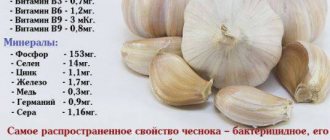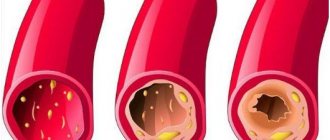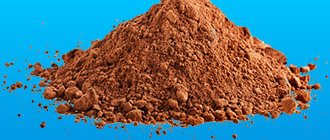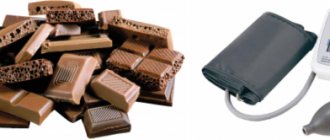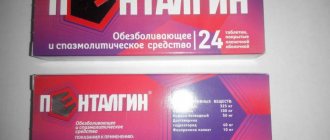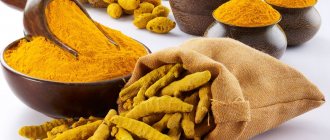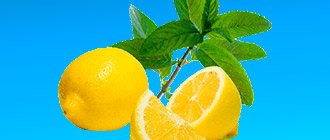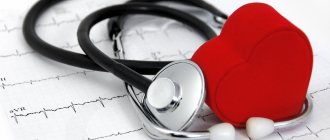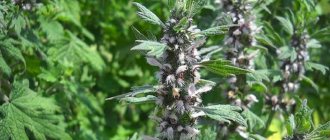18.12.2018
Last modified: April 15th, 2020 at 02:51 pm
Beetroot is a widespread tasty root vegetable, without which it is impossible to prepare borscht, vinaigrette, herring under a “fur coat”, and other favorite dishes. The vegetable contains useful substances and brings invaluable benefits to the body. It replenishes the lack of vitamins and microelements, and also fights dangerous diseases, including hypertension.
Beneficial features
Red beets help not only with blood pressure. This vegetable can have a beneficial effect on overall physical and emotional health. It's all about its chic composition, which contains a lot of different ingredients beneficial to the human body. For example:
- almost all B vitamins;
- beta-carotene;
- vitamins A, C, E and PP;
- healthy monosaccharides;
- various amino acids, saponins;
- malic and oxalic acid;
- starch;
- calcium, sulfur, magnesium and fluorine, as well as iodine and nickel;
- alimentary fiber.
This excellent set has a healing effect on the body's metabolism, promotes hematopoiesis, reduces the activity of harmful bacteria and helps the formation of glycogen. In addition to problems with blood pressure, beets help get rid of diseases of the gastrointestinal tract and liver.
It also helps regulate fat metabolism and helps the body absorb protein. With regular consumption of this vegetable, the blood circulation process throughout the body improves, the blood becomes cleaner, and the walls of blood vessels acquire the necessary tone.
Beetroot even affects the development of cancer cells - it slows down their reproduction. And what is especially worth highlighting is that heat treatment of beets only slightly reduces their benefits.
Boiled, stewed or even fried beets will definitely benefit the body, which makes them one of the most valuable vegetables for humans. And the variety of ways to prepare and use it for food only encourages you to add this valuable vegetable to your regular diet.
Does it increase or decrease blood pressure?
Scientists conducted international studies to find out how beets affect the body’s blood pressure. Ordinary rats were used as experimental subjects. After some success, experiments began to be carried out on people. And as a result, it was proven that if a person with hypertension drinks fresh beet juice daily, then his blood pressure drops to normal.
The decline occurs by approximately 6–11 points. The low blood pressure remains at the same level throughout the day. And the patient is in positive health all this time.
The effect on blood pressure occurs in the following way. The whole point is the presence of nitrates in the vegetable. These substances, once ingested by the body, provoke chemical reactions (during digestive processes) that result in the release of nitrogen oxides. As a result, the blood vessels of the body expand due to relaxation of their walls. And as a result, the blood pressure of a hypertensive patient returns to normal. But this effect does not appear immediately; usually the decrease in pressure occurs within six hours.
The speed of action and duration of the effect directly depends on the specific human body; In addition, it was noted that in women this effect is not as pronounced as in men.
Effect on pressure
Beetroot is actively used in therapeutic nutrition for hypertension, as it lowers blood pressure. The University of London conducted studies that proved that the root vegetable has diuretic, vasodilating properties and actually has a hypotensive effect, and the effect lasts for a long time.
It has also been proven that regular consumption of beets has a beneficial effect on the cardiovascular system:
- arteries strengthen, become more elastic, less susceptible to atherosclerosis;
- the permeability of capillaries and arterioles decreases, blood supply to the lower and upper extremities improves;
- the load on the heart is reduced;
- the risk of developing cardiovascular diseases is reduced.
With high blood pressure, nutritionists recommend including fresh beet leaves in your daily menu. They are used to prepare salads, soups, and snacks.
Recipes for hypertension
As mentioned above, you can cook beets from pressure in a large number of different ways. But the most useful for reducing high blood pressure will be beet juice and beet kvass.
Beet juice
The easiest way to prepare ordinary beet juice. To do this, you need to take raw beets in an accessible quantity and wash and peel them well. You can extract juice either with or without a juicer.
If you don’t have a juicer, then the peeled root vegetables need to be finely chopped. This can be done using a grater or blender, and beets can also be easily minced in a meat grinder. The resulting beet mass must be squeezed out properly. The squeezed juice is infused for at least two hours, after which it becomes completely ready for consumption.
Beetroot and carrot juice
If pure beet juice is contraindicated for someone, or this juice is not to their taste, you can prepare a beet-carrot version. To do this, you need to prepare beet and carrot juices according to the recipe described above. After which all that remains is to mix them in equal proportions, and then safely use them.
Beet kvass
Beet kvass is more difficult to prepare. And it takes much longer to prepare. But judging by the reviews, drinking it is much tastier and more enjoyable than regular juice.
To prepare beet kvass you need:
- Wash and peel the beets.
- Cut the vegetable into half rings. The width of each should be no more than two centimeters.
- The resulting pieces must be placed in a glass container, filling no more than half of its available volume.
- Add rye bread to the container. From 150 to 200 grams are poured into a three-liter jar. Accordingly, for each liter of volume - from 50 to 70.
- The remaining space is filled with clean, filtered water.
- For every liter of water poured, add one tablespoon of sugar.
- The vessel is covered with gauze or cotton cloth, after which you need to find a dark place for it to ferment the kvass.
- Kvass is prepared within a week. In this case, you need to regularly inspect the vessel and remove any plaque and/or foam that has appeared from time to time.
- The finished kvass needs to be strained, and it will be completely ready for use.
The drink must have a transparent tint and taste pleasant and fresh.
Kvass should be stored in a cool place. You can drink it with honey, which can be added right after preparing it.
Salads
You can make any vegetable mixes from beets - it goes well with almost all fruits. Dishes made from raw beet are considered the healthiest, but if desired, it can be boiled or baked. Salads should be seasoned with vegetable oil, apple cider vinegar or low-fat sour cream, and a minimum of salt should be added to them.
This salad is often called a “brush”, as it effectively cleanses the blood, improves its composition, and increases the concentration of hemoglobin. For the dish, take the following ingredients:
- beets – 2 pcs.;
- carrots – 2 pcs.;
- pomegranate – 1 pc.;
- sour apples – 2 pcs.
Wash the beet, cook for 40 minutes, drain the broth, cool the root vegetables, cut into small cubes. Peel the carrots and apples, grate them, and remove the seeds from the pomegranate. Mix the prepared products and season with vegetable oil.
With vegetables
You can prepare a vitamin mix from the following ingredients:
- beets – 1 pc.;
- orange juice – 1 tbsp. l.;
- carrots – 1 pc.;
- cucumber – 2 pcs.;
- garlic – 1-2 cloves;
- lemon juice – 1 tsp;
- honey – 1 tsp;
- olive oil – 3 tbsp;
- arugula and mint leaves.
Boil beets and carrots, bake or use raw. Cut all the vegetables into cubes, add crushed garlic, mix, and add a little salt. Combine olive oil with honey and freshly squeezed citrus juice. Place arugula leaves on a plate, vegetables on top, pour dressing, garnish with mint.
With seaweed
This edible seaweed is an essential source of iodine, and when mixed with beets, you can get a very healthy dish. For the salad you will need the following ingredients:
- potatoes – 2 pcs.;
- carrots – 1 pc.;
- seaweed – 250 g;
- beets – 2 pcs.;
- onion – 1 pc.;
- olive oil – 4 tbsp. l.;
- lemon juice, herbs.
Boil vegetables, cool, cut into cubes. Chop the seaweed a little, mix with vegetables, chopped onions and herbs. For the dressing, mix olive oil with lemon juice and mix well.
Pickled beets
Marinated beet can be eaten as a snack or added to salads and borscht. Ingredients for the dish:
- beets – 800-1000 g;
- vinegar – 80-100 ml;
- sugar – 1 tbsp. l.;
- peppercorns – 5 pcs.;
- bay leaf – 2 pcs.;
- cloves – 5 pcs.;
- water – 0.5 l.
Peel the root vegetable, cook for an hour and a half. Cool, cut into slices, put in jars. To prepare the marinade, pour water into a container, add sugar, salt to taste, spices and vinegar. Mix everything and bring to a boil. Pour hot liquid over the beet so that it covers the slices and close with a lid. After the container has cooled, put it in the refrigerator for 8-12 hours.
Contraindications and precautions
In order for beets to bring maximum benefits, it is important to understand how to use them correctly. Otherwise, the body may be harmed. Indeed, in addition to its high benefits, beets also have their contraindications:
- Do not use this product if you have an upset stomach or flatulence. Especially in the case of chronic disorders.
- Osteoporosis is another stop sign for beets. The essence of the problem is calcium that is not absorbed due to the disease. And since there is a lot of calcium in beets, this can have a very unpleasant effect on the health of the body.
- The sugar content in this root vegetable precludes its consumption by people with diabetes.
- People with low blood pressure should use beets very carefully.
Excessive consumption of beets may cause nausea and stomach upset. This is due to the fact that beets actively cleanse the body of waste and toxins. And since the product also combats constipation, consumption in large quantities also causes diarrhea.
Because of this, beetroot treatment must be started with caution. At first, it will be enough to drink half a glass of juice per day, or even less. And gradually increase the dose to one glass. The maximum permissible dose is 400 ml. And it is advisable to drink more clean water during the period of drinking juice so that the beets remove toxins more easily.
When to use beets
Doctors recommend healthy people to use beets in their diet. After all, this wonderful vegetable prevents many diseases.
Beets can be used not only in the treatment of hypertension. This root vegetable allows you to fight a number of other pathological processes, many of which lead to increased blood pressure.
In what cases is beets indicated:
- Low hemoglobin level;
- Atherosclerosis;
- Diseases of the heart and blood vessels;
- Constipation;
- Hypertension;
- Thyroid diseases;
- Obesity.
Thus, beet juice helps in a number of cases. It makes it possible to eliminate many diseases that lead to hypertension.
Useful video
In the video below you can find out additional information about whether beets increase or decrease blood pressure:
With high blood pressure, beets are an excellent way to bring it back to normal. We are talking about high blood pressure; in the opposite situation, you need to be careful with this vegetable. When used correctly, beets will help not only improve blood pressure, but also improve the overall health of the body, thanks to its excellent composition. But it also has its contraindications, which must be taken into account during treatment.
Possible side effects
- Freshly squeezed beet juice has a very strong effect on the body. It can cause malaise, headaches, vomiting, and diarrhea. To prevent these unpleasant phenomena, it is necessary to follow the rules for preparing and using the product.
- It is strictly forbidden to exceed the dosage indicated in the prescription. 100 ml of freshly squeezed beet juice consumed before meals can lead to dizziness, nausea and even peptic ulcers.
Beets have shown their effectiveness in the fight against high blood pressure. At home, it is quite easy to prepare a folk remedy from this vegetable. This drug should be taken carefully, taking into account the characteristics of the body. It is important to remember that you should not neglect qualified treatment, which can only be provided by a cardiologist.
If you find an error, please select a piece of text and press Ctrl+Enter.
